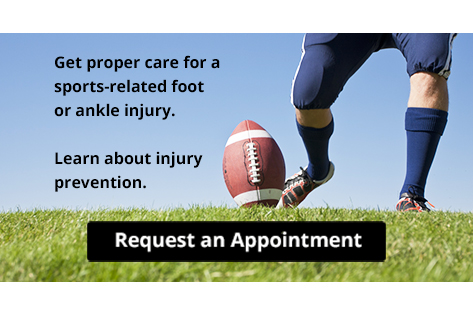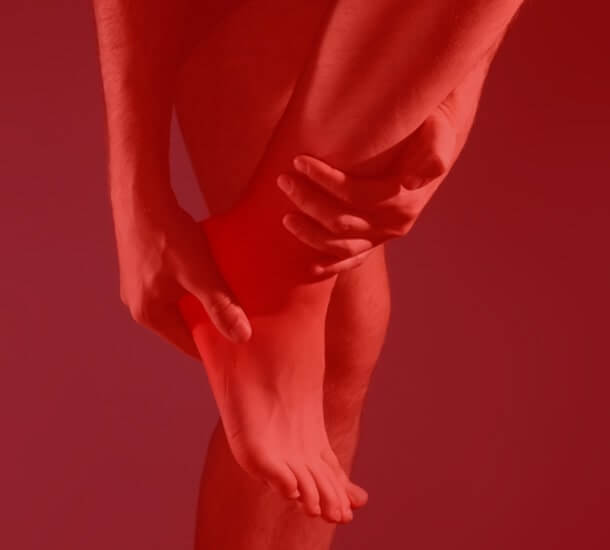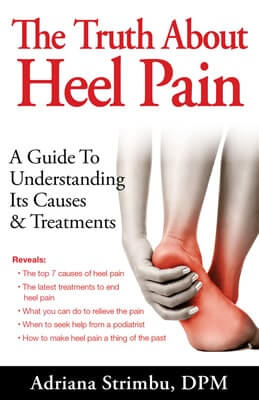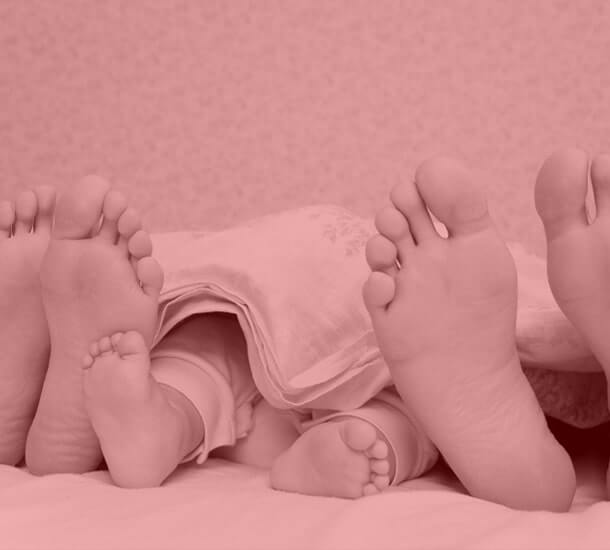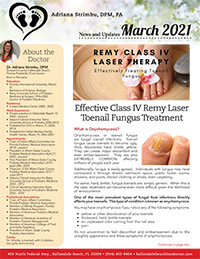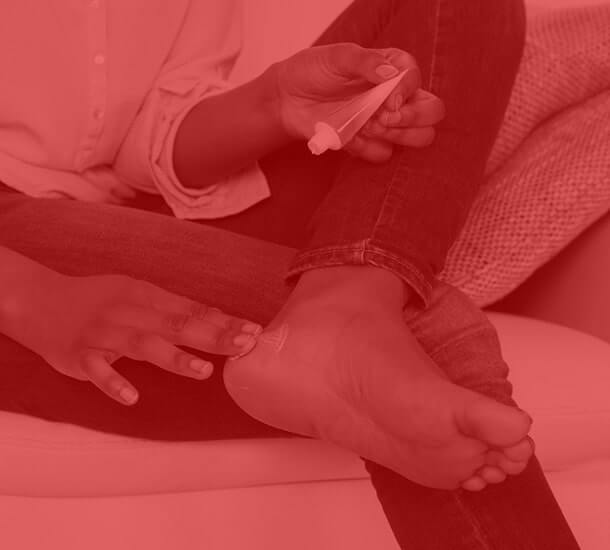Connect With Us
Blog
Items filtered by date: October 2022
Get Proper Care for a Sports-Related Foot or Ankle Injury This Fall
Athlete’s Foot and Work Boots

Athlete’s foot is a pesky affliction of the foot spread by a fungus that may create a rash on your feet. If you wear work boots for your job all day, it is important to know that the fungus causing this infection can fester inside of your work boots. To prevent this from happening, you might consider alternating between different pairs of work boots from day to day. This is ultimately done to keep your work boots dry because when the boots are damp, this facilitates the growth of the fungus. Additionally, you may choose to wear work boots that provide some breathability for your feet in order to minimize the extent to which your feet are sweating and creating moisture. This same method also applies to socks that are worn. If you wear work boots throughout the workday, contact a podiatrist today for more tips and tricks.
Athlete’s foot is an inconvenient condition that can be easily reduced with the proper treatment. If you have any concerns about your feet and ankles, contact Adriana Strimbu, DPM from Complete Foot & Ankle Care. Our doctor will treat your foot and ankle needs.
Athlete’s Foot: The Sole Story
Athlete's foot, also known as tinea pedis, can be an extremely contagious foot infection. It is commonly contracted in public changing areas and bathrooms, dormitory style living quarters, around locker rooms and public swimming pools, or anywhere your feet often come into contact with other people.
Solutions to Combat Athlete’s Foot
- Hydrate your feet by using lotion
- Exfoliate
- Buff off nails
- Use of anti-fungal products
- Examine your feet and visit your doctor if any suspicious blisters or cuts develop
Athlete’s foot can cause many irritating symptoms such as dry and flaking skin, itching, and redness. Some more severe symptoms can include bleeding and cracked skin, intense itching and burning, and even pain when walking. In the worst cases, Athlete’s foot can cause blistering as well. Speak to your podiatrist for a better understanding of the different causes of Athlete’s foot, as well as help in determining which treatment options are best for you.
If you have any questions please feel free to contact our office located in Hallandale Beach, FL . We offer the newest diagnostic and treatment technologies for all your foot and ankle needs.
Foot Shape and Ancestry?

Some people think that foot shape may help to determine ancestry, despite the fact, there is no concrete evidence to support this. The type of arch one has may contribute significantly to the entire shape of the foot and differs from person to person. Research has indicated the arch affects the movement of the foot, and overuse can happen when the arch is too high or low. Additionally, the arch is responsible for pronation and supination of the foot and is a normal part of walking. This is defined as pushing off while walking or running, and the feet will naturally roll outward to balance the weight of the body. An abnormal foot structure may lead to the development of specific foot conditions that can include bunions, plantar fasciitis, and ankle pain. If you have questions about your foot structure, or if you have any foot conditions, it is strongly advised that you confer with a podiatrist who can eagerly address any concerns you may have.
If you have any concerns about your feet, contact Adriana Strimbu, DPM from Complete Foot & Ankle Care. Our doctor can provide the care you need to keep you pain-free and on your feet.
Biomechanics in Podiatry
Podiatric biomechanics is a particular sector of specialty podiatry with licensed practitioners who are trained to diagnose and treat conditions affecting the foot, ankle and lower leg. Biomechanics deals with the forces that act against the body, causing an interference with the biological structures. It focuses on the movement of the ankle, the foot and the forces that interact with them.
A History of Biomechanics
- Biomechanics dates back to the BC era in Egypt where evidence of professional foot care has been recorded.
- In 1974, biomechanics gained a higher profile from the studies of Merton Root, who claimed that by changing or controlling the forces between the ankle and the foot, corrections or conditions could be implemented to gain strength and coordination in the area.
Modern technological improvements are based on past theories and therapeutic processes that provide a better understanding of podiatric concepts for biomechanics. Computers can provide accurate information about the forces and patterns of the feet and lower legs.
Understanding biomechanics of the feet can help improve and eliminate pain, stopping further stress to the foot.
If you have any questions please feel free to contact our office located in Hallandale Beach, FL . We offer the newest diagnostic and treatment technologies for all your foot and ankle needs.
Who Can Get an Achilles Tendon Injury?
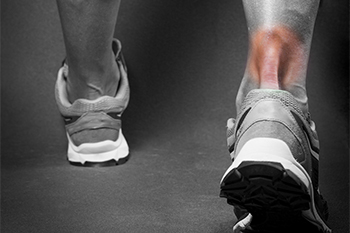
People who have endured an Achilles tendon injury are often not mistaken about it. A common sign is an immediate pain and discomfort, and it can be extremely difficult to walk. It can happen as a result of increasing running speed and mileage too quickly, and this type of injury can fall into two categories. Noninsertional Achilles tendinitis affects the middle of the tendon, and younger people are prone to developing this type of injury. The lower part of the tendon is affected where it attaches to the heel bone during insertional Achilles tendinitis and can affect people of all ages. Additional symptoms can include heel and calf pain, and there can be a limited range of motion. Some people develop Achilles tendon injuries from not warming up or cooling down properly, in addition to wearing shoes that do not fit properly. This is an injury that needs prompt medical attention for a complete recovery so it is suggested that a podiatrist be contacted who can guide you toward the best treatment techniques.
Achilles tendon injuries need immediate attention to avoid future complications. If you have any concerns, contact Adriana Strimbu, DPM of Complete Foot & Ankle Care. Our doctor can provide the care you need to keep you pain-free and on your feet.
What Is the Achilles Tendon?
The Achilles tendon is a tendon that connects the lower leg muscles and calf to the heel of the foot. It is the strongest tendon in the human body and is essential for making movement possible. Because this tendon is such an integral part of the body, any injuries to it can create immense difficulties and should immediately be presented to a doctor.
What Are the Symptoms of an Achilles Tendon Injury?
There are various types of injuries that can affect the Achilles tendon. The two most common injuries are Achilles tendinitis and ruptures of the tendon.
Achilles Tendinitis Symptoms
- Inflammation
- Dull to severe pain
- Increased blood flow to the tendon
- Thickening of the tendon
Rupture Symptoms
- Extreme pain and swelling in the foot
- Total immobility
Treatment and Prevention
Achilles tendon injuries are diagnosed by a thorough physical evaluation, which can include an MRI. Treatment involves rest, physical therapy, and in some cases, surgery. However, various preventative measures can be taken to avoid these injuries, such as:
- Thorough stretching of the tendon before and after exercise
- Strengthening exercises like calf raises, squats, leg curls, leg extensions, leg raises, lunges, and leg presses
If you have any questions please feel free to contact our office located in Hallandale Beach, FL . We offer the newest diagnostic tools and technology to treat your foot and ankle needs.
Stretching May Help to Prevent Running Injuries

Anyone who enjoys running needs to be aware that an injury can interrupt their daily exercise routine. Many people who have endured a running injury will continue to run making the injury worse. It is helpful to implement effective strategies that can help to prevent running injuries. These can consist of stretching before and after running. Additionally, gradually increasing duration and speed as this can provide the body with flexibility. Strength training is essential to practice, which is an efficient method for building and maintaining muscle strength. Research has shown it is beneficial to eat healthy and balanced foods that have adequate nutrients and vitamins. Running injuries often affect the feet and many people can endure a broken foot or ankle. If you would like more information about how to practice effective methods to prevent running injuries, please confer with a podiatrist.
Exercising your feet regularly with the proper foot wear is a great way to prevent injuries. If you have any concerns about your feet, contact Adriana Strimbu, DPM of Complete Foot & Ankle Care. Our doctor will treat your foot and ankle needs.
How to Prevent Running Injuries
Many common running injuries are caused by overuse and overtraining. When the back of the kneecap starts wearing out and starts causing pain in your knee, this is commonly referred to as runner’s knee. Runner’s knee is a decrease in strength in your quadriceps and can occur if you’re not wearing properly fitted or supporting shoes. To prevent runner’s knee, focusing on hip strengthening is a good idea, as well as strengthening your quads to keep the kneecaps aligned.
What Are Some Causes of Running Injuries?
- One cause of a common running injury is called iliotibial band syndrome.
- Plantar fasciitis is also another common injury.
- Stress fractures can occur from overtraining, lack of calcium, or even your running style.
Best Ways to Prevent Running Injuries
- Wear footwear that fits properly and suits your running needs.
- Running shoes are the only protective gear that runners have to safeguard them from injury.
- Make a training schedule. Adding strengthening exercises as well as regular stretching can help keep you strong and limber and can lessen the possibility of injuries.
- Stretching keeps muscles limber; this will help you gain better flexibility.
If you have any questions, please feel free to contact our office located in Hallandale Beach, FL . We offer the newest diagnostic and treatment technologies for all your foot care needs.
